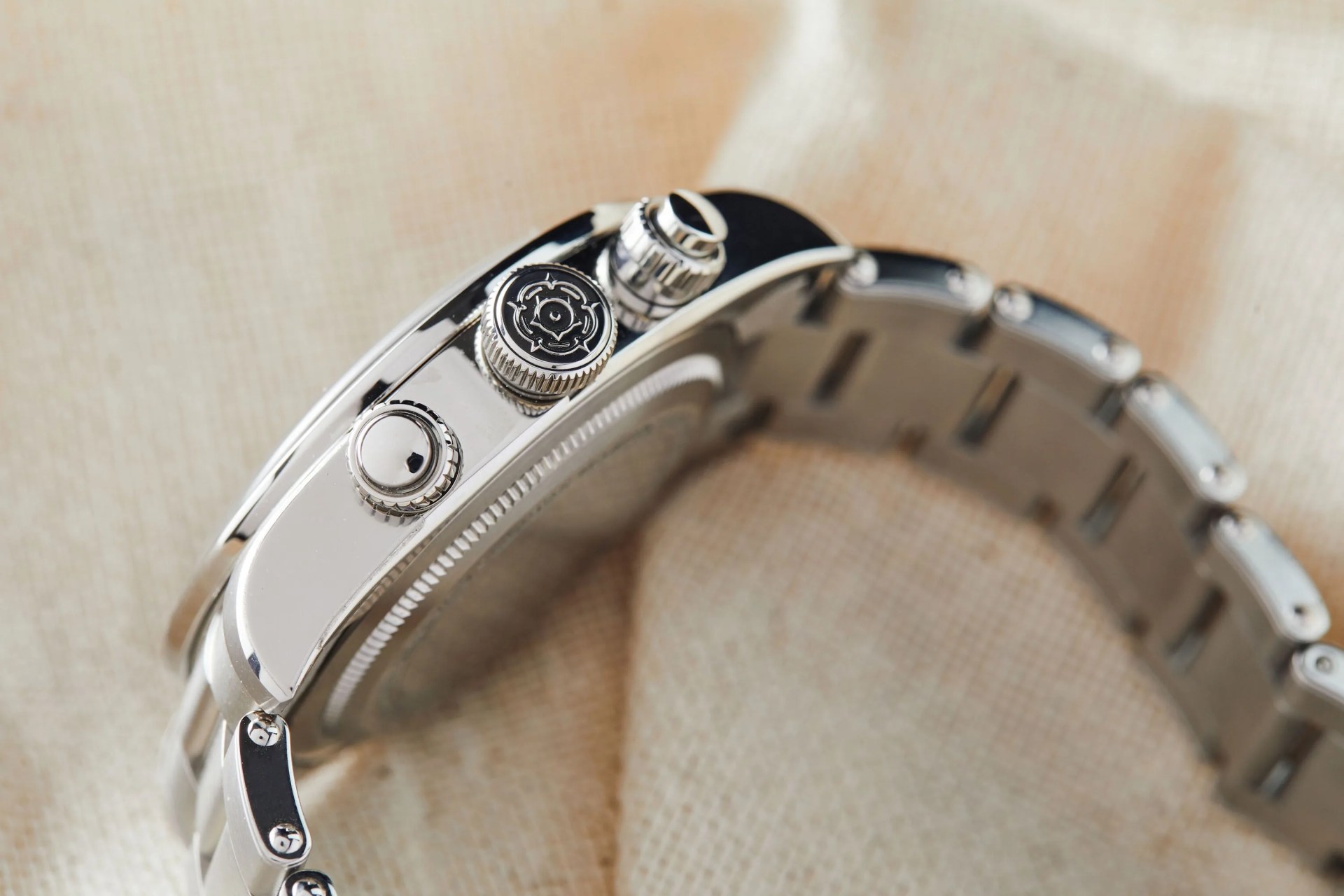Chronograph watches are cool and technical-looking, with multiple subdials, scales and pushers — and, let’s face it, this is why they’re still so popular today. But you shouldn’t miss out on the useful stopwatch functionality they were invented to offer. While you probably don’t need to calculate speed using a tachymeter scale or how far away an artillery battery is, a chronograph can indeed come in handy in daily life and offer a satisfying way to get more out of your watch.
While there are a few different types of chronographs, operating the great majority of them goes something like this:
Start the Chronograph
In most (but not all) cases, a chronograph watch will have two pushers on the righthand side of the case. Press the top pusher (located at 2 o’clock) to begin timing an event, and you’ll notice the seconds hand (usually centrally mounted on the dial) start to sweep or tick.









